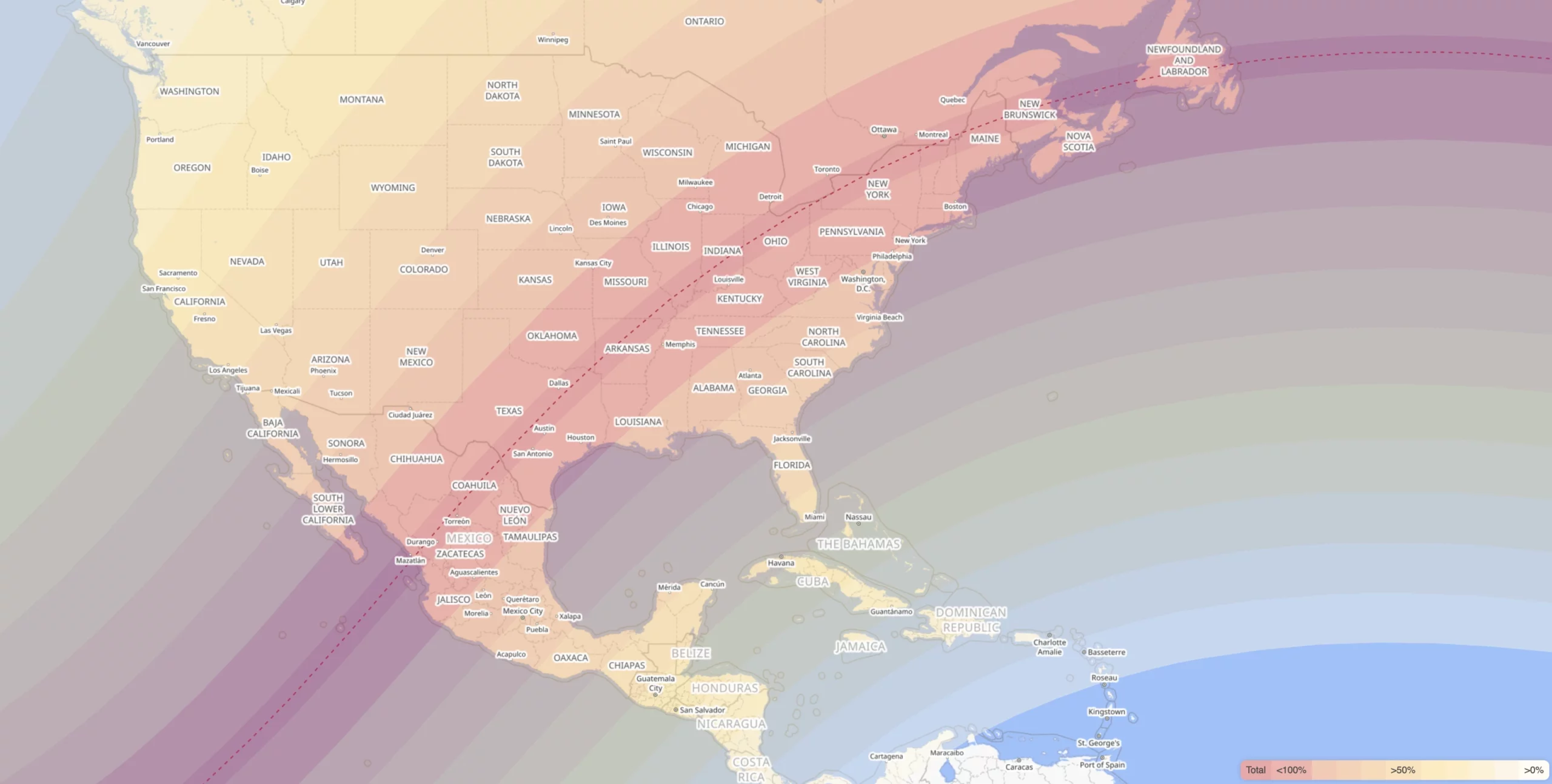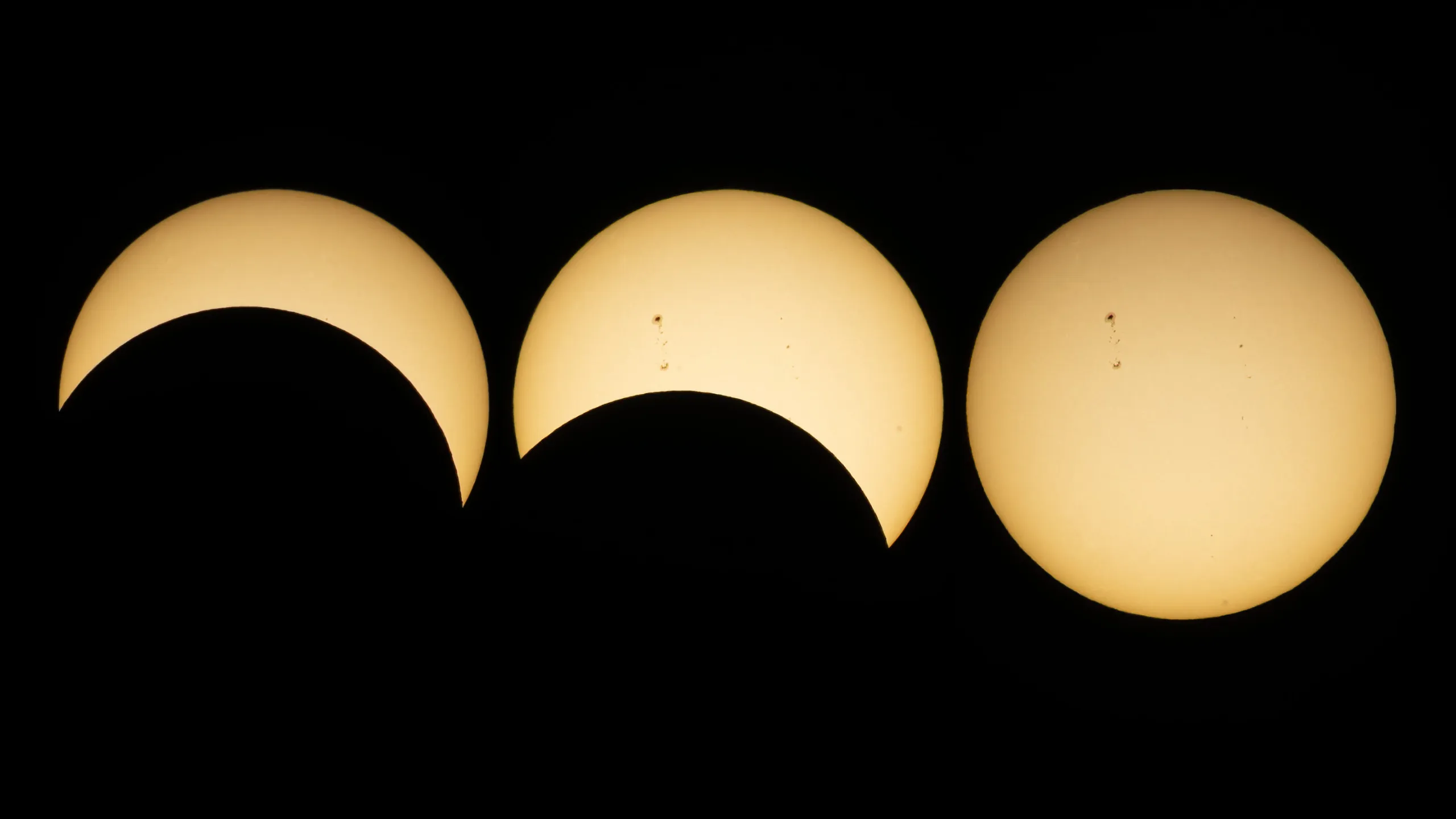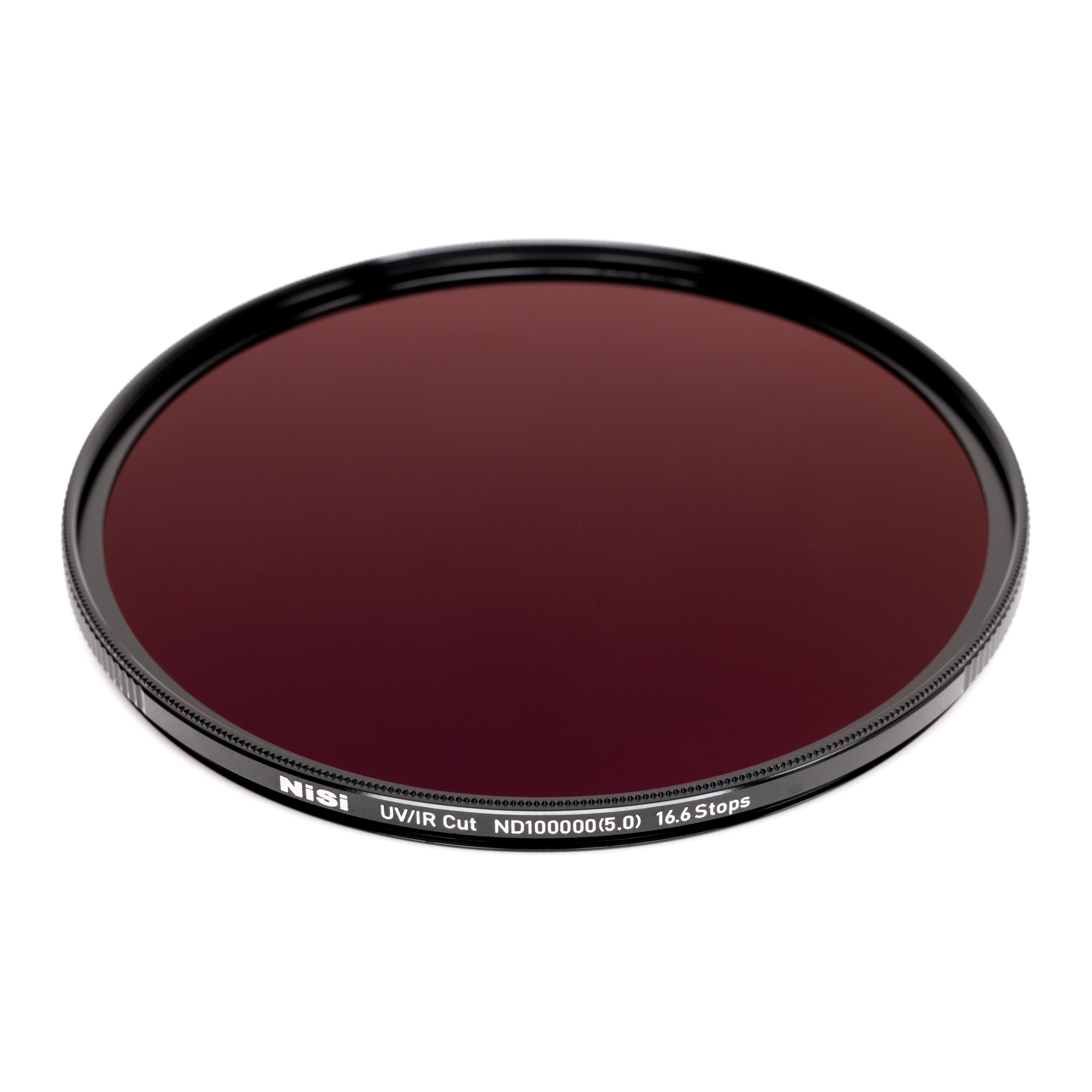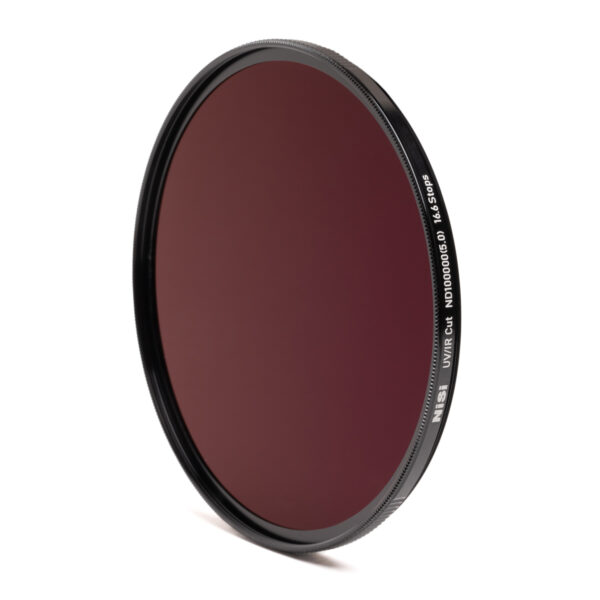As the celestial dance brings a total solar eclipse to the skies on 8th April 2024, enthusiasts and photographers across the USA are gearing up for a spectacle unlike any other. This rare event, where the moon perfectly aligns to obscure the sun, casting a shadow on Earth, offers a unique opportunity for both awe-inspiring views and photography. Understanding the path of the eclipse, identifying the best viewing locations, and preparing with the right equipment, like NiSi Solar Filters, are crucial for a memorable experience. Here’s everything you need to know to prepare for this astronomical event.
On the 8th of April, 2024, the skies will stage a breathtaking celestial event—a total solar eclipse that promises to captivate observers across North America. This astronomical phenomenon occurs when the moon passes between the Earth and the sun, momentarily cloaking the day in a surreal twilight and revealing the sun’s elusive corona. For a few precious minutes, the path of totality will offer a rare glimpse into the intricate dance between celestial bodies, turning day into night and unveiling stars and planets in a daytime sky.
Observers within this path can expect an awe-inspiring sight as the moon completely covers the sun, creating a dramatic and sudden drop in temperature, and casting an eerie shadow across the landscape. Those situated in the path of totality will witness the sun’s corona—a halo of plasma that is usually hidden by the sun’s bright light—glowing in a ring of ethereal light around the dark silhouette of the moon. This is a moment of profound beauty and scientific interest, as the corona can only be observed from Earth during a total solar eclipse.
For photography enthusiasts and casual observers alike, this event offers a unique opportunity to experience and capture one of nature’s most magnificent displays. With the right preparation and equipment, such as NiSi Solar Filters designed to protect your cameras from the sun’s intense rays, anyone can safely photograph and immortalize the spectacle. The 2024 solar eclipse is not just an astronomical event; it’s a communal experience that brings people together in wonder and anticipation, encouraging us to look up and marvel at the wonders of our universe.
Path of the Eclipse
The total solar eclipse of 2024 will carve a path across North America, from Mexico through the United States and into Canada. In the USA, the path of totality (where the sun is completely obscured by the moon) will span across several states, offering many Americans a front-row seat to this natural phenomenon. The eclipse will first make landfall in Texas, moving northeast across states such as Oklahoma, Arkansas, Missouri, Illinois, Kentucky, Indiana, Ohio, Pennsylvania, New York, Vermont, New Hampshire, and finally Maine, before heading into Canada.

Best Viewing Locations in the USA
As the anticipation for the total solar eclipse on April 8, 2024, grows, identifying the best viewing locations becomes a key part of planning for this extraordinary event. The path of totality, where the eclipse will be fully visible, stretches across a swath of the United States, offering many Americans the incredible opportunity to witness this celestial phenomenon right from their own backyards. From the southern borders of Texas to the northeastern reaches of Maine, the eclipse will trace a line across the heartland of America, enveloping cities, towns, and rural areas in momentary darkness during the day.
The eclipse covers a largely populated area, so whether you’re planning a special trip or simply stepping outside your home, many can experience the upcoming eclipse. The beauty of this event is its accessibility; many will find that some of the country’s most stunning natural landscapes and urban settings alike fall within the path of totality. This means that, depending on where you are, you could enjoy this rare astronomical event surrounded by the comfort and familiarity of your neighborhood or amidst the grandeur of America’s scenic landscapes.
Here’s a few recommendations:
- Texas: The eclipse enters the United States through Texas, where cities like Dallas and Austin lie just outside the path of totality. However, areas such as Maverick and Webb counties will experience the eclipse in its full glory.
- Missouri: With St. Louis near the path’s edge, viewers in the northern and central parts of the state, like Kansas City, can expect an impressive display.
- Illinois: Carbondale, which experienced totality during the 2017 eclipse, will once again be a prime location.
- Ohio: Cities like Cleveland and Toledo will offer spectacular views, with the eclipse occurring mid-day, providing optimal lighting conditions.
- New York: Upstate New York, particularly areas around Rochester and Syracuse, will be under the path of totality.

NiSi Solar Filters: Essential Gear for Eclipse Photography
Capturing the splendor of a solar eclipse requires not just skill and timing, but also the right equipment. As we approach the total solar eclipse on April 8, 2024, photographers from amateurs to professionals are seeking the best gear to safely photograph this celestial event. At the forefront of essential equipment are NiSi Solar Filters, designed specifically for the unique demands of eclipse photography. These filters are not just about protection; they enhance the quality of your images, ensuring that the beauty of the eclipse is captured in all its glory.
Choosing the perfect Neutral Density (ND) filter density is critical for capturing the full sun during a solar eclipse, especially when aiming to photograph the intricate details of the event, including the phases leading up to and following totality. For solar eclipse photography, a high-density ND filter is necessary to safely photograph the sun without damaging your camera’s sensor or compromising the quality of the image. An ND filter with a density of ND100000(5.0) 16.6 Stop is recommended for photographing the sun directly. This level of density reduces the amount of light entering the lens, ensuring that the intense brightness of the sun is brought down to a safe level for the cameras sensor.
The use of a high-density ND filter allows photographers to control the exposure in the extremely bright conditions of a solar eclipse, enabling the capture of the sun’s surface and surrounding corona without overexposure. It also allows for longer exposure times, which can be particularly useful for capturing the movement and changing light patterns as the moon crosses in front of the sun. However, it’s crucial to use these filters in conjunction with appropriate solar safety practices, as looking directly at the sun, can cause serious eye damage. For the moments of totality, when the sun is completely covered by the moon, photographers may need to remove the Solar ND filter to capture the stunning details of the corona and the surrounding darkness of the sky, before reapplying it as the sun reemerges.

NiSi Solar Filters stand out for their advanced optical technology, including features like IR Cut and UV protection, which are crucial for improving the color accuracy and clarity of your eclipse photographs. The IR Cut filter blocks infrared light, preventing it from reaching the camera sensor and causing color distortion. This is particularly important during an eclipse, when the sun’s rays can interfere with the true colors of the corona and the surrounding sky. By filtering out unwanted infrared light, these solar filters help in capturing the natural colors of the eclipse as they appear to the naked eye.
Similarly, the UV protection provided by NiSi Solar Filters shields the camera sensor from ultraviolet rays, which can also affect image clarity and color fidelity. By blocking these rays, the filters ensure that your photographs of the eclipse are not only safe to capture but also stunningly vivid and clear.
The benefits of IR Cut and UV protection in NiSi Solar Filters are integral for any photographer looking to document the eclipse. Whether you’re aiming to capture the intricate details of the sun’s corona or the dramatic lighting changes as the moon passes in front of the sun, these filters offer the technological edge needed to produce breathtaking images. As we gear up for the 2024 solar eclipse, equipping yourself with NiSi Solar Filters means ensuring that your photography is not just protected, but also enhanced, allowing you to preserve this rare event in its most true and vibrant form.
Capturing the solar eclipse requires not just the right filters, but a comprehensive set of photography gear to ensure you get the best possible shots of this rare event. Here’s a list of recommended photography gear for shooting the eclipse:
- Camera: A DSLR or mirrorless camera with manual mode capabilities allows you full control over exposure settings, which is crucial for capturing the varying brightness levels of an eclipse.
- Lenses: A telephoto lens (200mm or longer) is ideal for capturing detailed images of the eclipse. A wide-angle lens can also be useful for capturing the landscape and the eclipse’s effect on the environment.
- Tripod: A sturdy tripod is essential to stabilize your camera, especially when using long telephoto lenses or long exposure times. This ensures sharp images and reduces the risk of camera shake.
- Remote Shutter Release: A remote shutter release allows you to take photos without touching the camera, further minimizing the risk of camera shake and ensuring sharp images.
- Extra Batteries and Memory Cards: Shooting an eclipse can be battery and memory intensive, especially if you plan to take a lot of photos or long exposures. Having extra batteries and memory cards ensures you don’t miss any part of the event.
- Solar Viewing Glasses: Safety first—solar viewing glasses are essential for looking at the sun directly before and after totality to protect your eyes from harmful solar radiation.
- Lens Hood: A lens hood can help prevent lens flare and protect the front element of the lens when shooting in the direct sunlight.
Tips for Using NiSi Solar Filters
Before the solar eclipse on April 8, 2024, it’s crucial to conduct a test shoot with your NiSi Solar Filter to familiarize yourself with its use and understand how to capture stunning images of the sun. This preparatory step allows you to navigate any learning curve in handling the filter and adjusting your camera settings for optimal exposure without the pressure of the fleeting moments of an eclipse. Begin by setting up your camera on a tripod during a clear day and attach the NiSi Solar Filter securely to your lens. Experiment with various shutter speeds, apertures, and ISO settings to see how they affect the sun’s image. This exercise will help you determine the best combinations to capture the sun’s features, such as sunspots or the surrounding corona during the eclipse. Additionally, practicing focusing manually, since autofocus may struggle, is essential. By conducting a test shoot, you’ll gain confidence in your equipment and technique, ensuring you’re ready to capture the eclipse with precision and clarity. This hands-on experience is invaluable for making the most of the solar eclipse, allowing you to enjoy the event while capturing breathtaking images safely.
Safety Tips and Cautions
As we eagerly anticipate the solar eclipse on April 8, 2024, it’s essential to prioritize safety while preparing to observe and photograph this spectacular event. Observing a solar eclipse, particularly through photography equipment, requires adherence to specific safety guidelines to protect both your eyes and your camera equipment from the sun’s harmful rays. The excitement of capturing such a momentous occasion should not overshadow the importance of safety precautions. In this section on safety tips and cautions, we will outline crucial advice and measures to ensure that your eclipse viewing experience is not only memorable but also safe. These guidelines are designed to protect you and enhance your enjoyment of the eclipse. Whether you’re a seasoned astrophotographer or a curious observer, following these safety tips will help you witness the beauty of the eclipse without risking injury or damage to your equipment. Let’s ensure that this celestial event is a source of awe and inspiration, safeguarded by our commitment to safety and responsibility.
- It is important to note that the filter is not appropriate for direct solar observation with the naked eye, and should exclusively be used for photographic purposes.
- Check the solar filter for damage before each use by holding it up to a bright light (not the sun). Secure the filter properly by screwing it fully onto the lens.
- The NiSi Solar Filter is not suitable eye protection for extended view of sun or solar eclipses. Do not look directly or indirectly into the sun without appropriate eye protection.
- The Solar Filter should be installed in front of the camera lens or telescope before trying to align it with the sun. Point the camera away from sun when attaching and removing the solar filter.
- Do not use an optical viewfinder when aligning your camera or telescope with the sun. It is recommended to use the live view feature of the camera for aligning it with the sun and for viewing.
- Do not leave a camera unattended where a child or inexperienced adult could point it at the sun without the filter adequately attached.
- The filter may absorb solar energy and get hot during use. Use extra care when removing it.
It’s Time to Practice and Shoot the Eclipse
The total solar eclipse of April 8, 2024, offers a rare opportunity for both seasoned astronomers and casual sky-gazers to witness one of nature’s most awe-inspiring events. By understanding the path of the eclipse, choosing the best viewing location, and equipping yourself with NiSi Solar Filters, you can safely enjoy and capture this celestial spectacle. Prepare now to ensure that you’re ready for an unforgettable experience.
